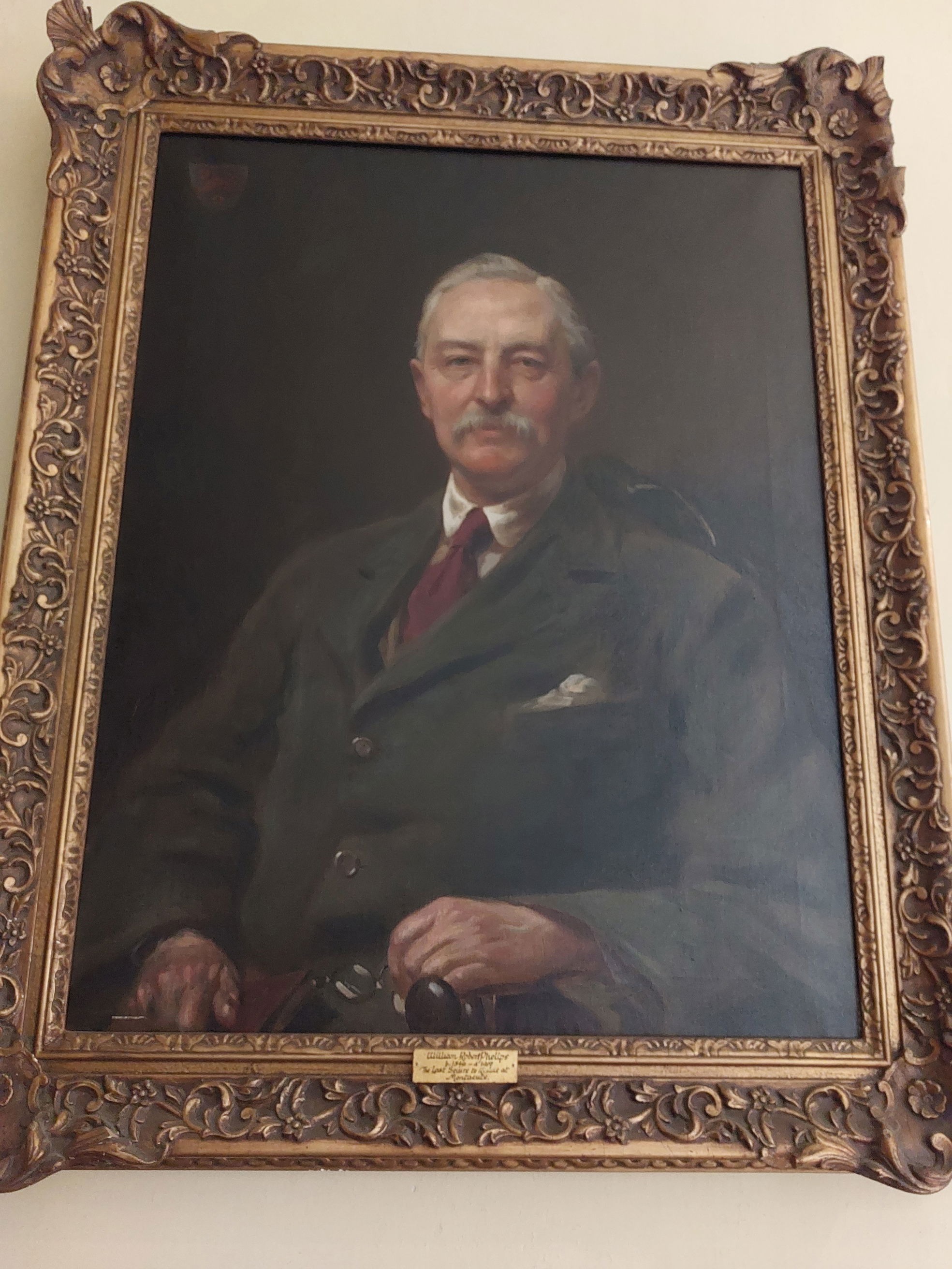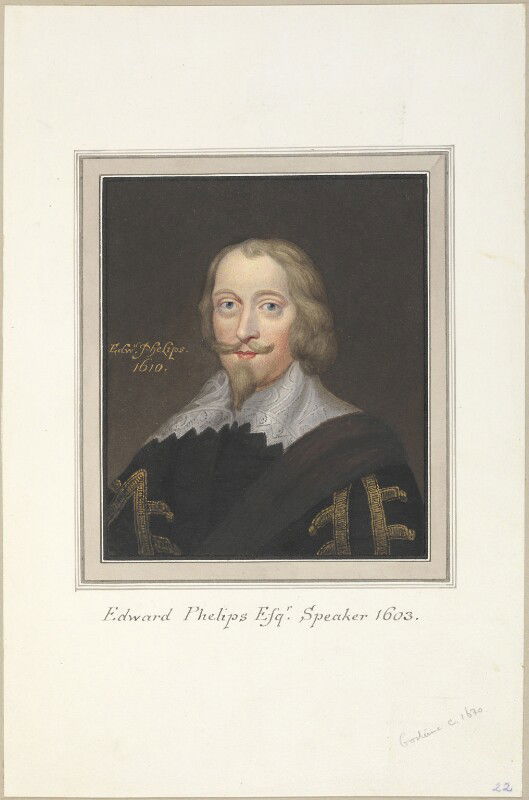Montacute House (built ~1600) and the Phelips family
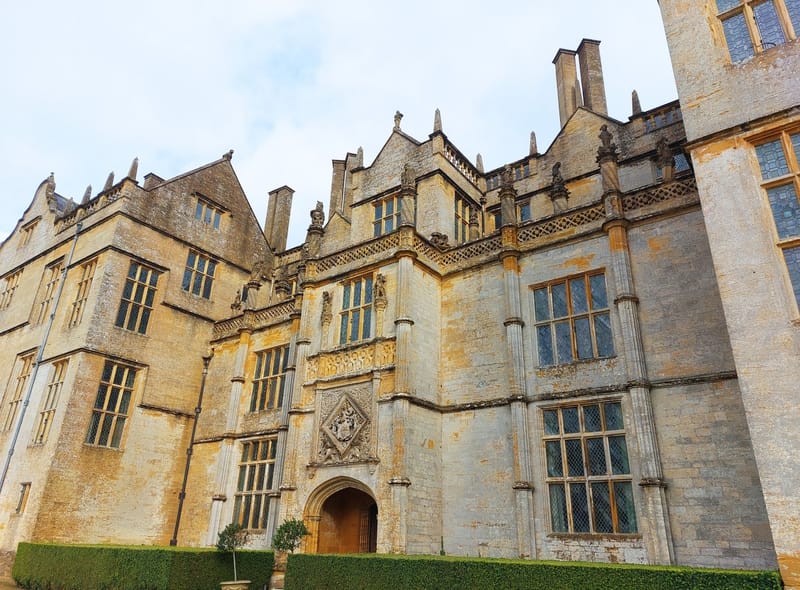
Montacute House is owned by the National Trust and its TV and film appearances include Sense and Sensibility (1995), Rebecca (1997), The Hound of the Baskervilles (2000), The Libertine (2004), and Wolf Hall (2005). In the Wallace & Gromit animation 'The Curse of the Were-Rabbit', Tottington Hall is based on Montacute House.
The National Trust publication 'Montacute House' by Malcolm Rogers (ISBN: 9781843590682; available second-hand) gives a good description of the House and also of its occupants over the centuries; a more recent version by Nicholas Cooper and Jo Moore was published in 2018. The image below is from a postcard, probably from the 1960s or 70s.

As you drive into Montacute from the west you can look down the West Drive for a fantastic view of the house. The impressive hamstone gateposts are topped with sculptures of flaming fire-baskets; there are similar sculptures on the gateposts at the end of the East drive, by Odcombe Lodge. This is the Phelips family crest and might derive from marriage of Thomas Phelips, son of the founder of the Montacute Phelips lineage, to Jane Compton, widow of Abbot of Pendomer. The Compton family crest was 'a beacon fired proper', a golden grate on wheels with flames protruding above.

But the truth should never get in the way of a good story, and the alternative explanation for the family crest is totally unfounded but much more memorable! By this account, a previous owner of Montacute House (presumably the third Edward Phelips?) had an only daughter (Betty or Betsy) who fell in love with a member of a well-known county family and got pregnant. Her father shut Betsy in a room at Montacute's Abbey gatehouse ("Betsy's room"), and she was allowed in an enclosed part of their garden, known as Betsy's garden. When the child was born her father was so angry that when he visited her he threw the cradle and baby onto a large open fire, killing the child who would have been his heir. When the squire died there was no direct heir to the property and the estate passed to a nephew (possibly the fourth Edward Phelips, Edward III's Irish cousin) whose branch of the family adopted a burning cradle as a crest to commemorate this tragic incident which had led to them inheriting the estate.
A version of this story was published by Llewelyn Powys in The Atlantic Magazine in 1935; if we assume the nephew was Edward Phelips IV then the story overlooks the fact that Edward Phelips III had 3 girls; on his death the estate passed to his daughters and his nephew married into the family.
The 'Flaming Beacons' top the gateposts of the West Drive and also the gates to the south-east of Montacute House, by Odcombe Lodge (photos below:)
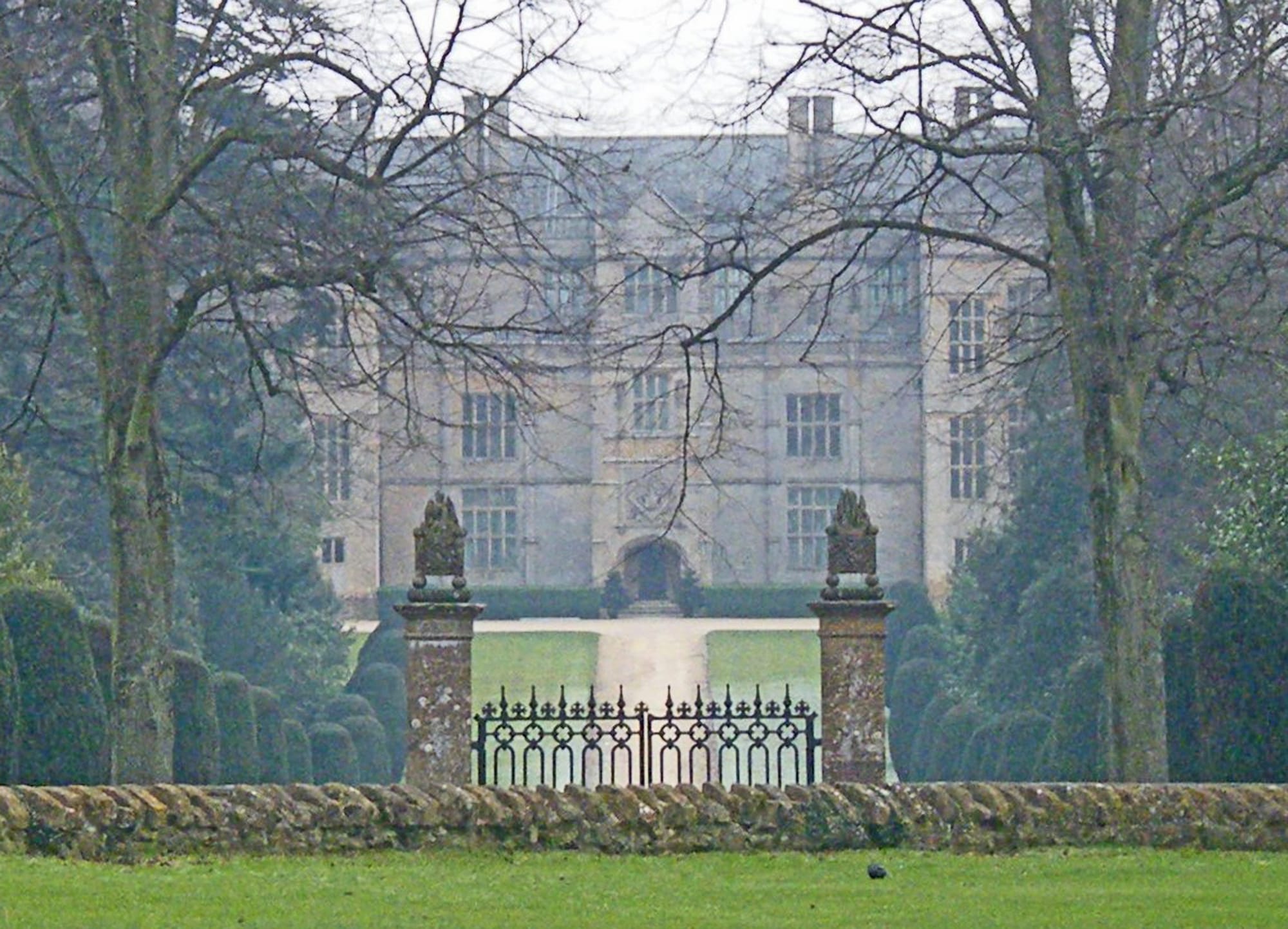
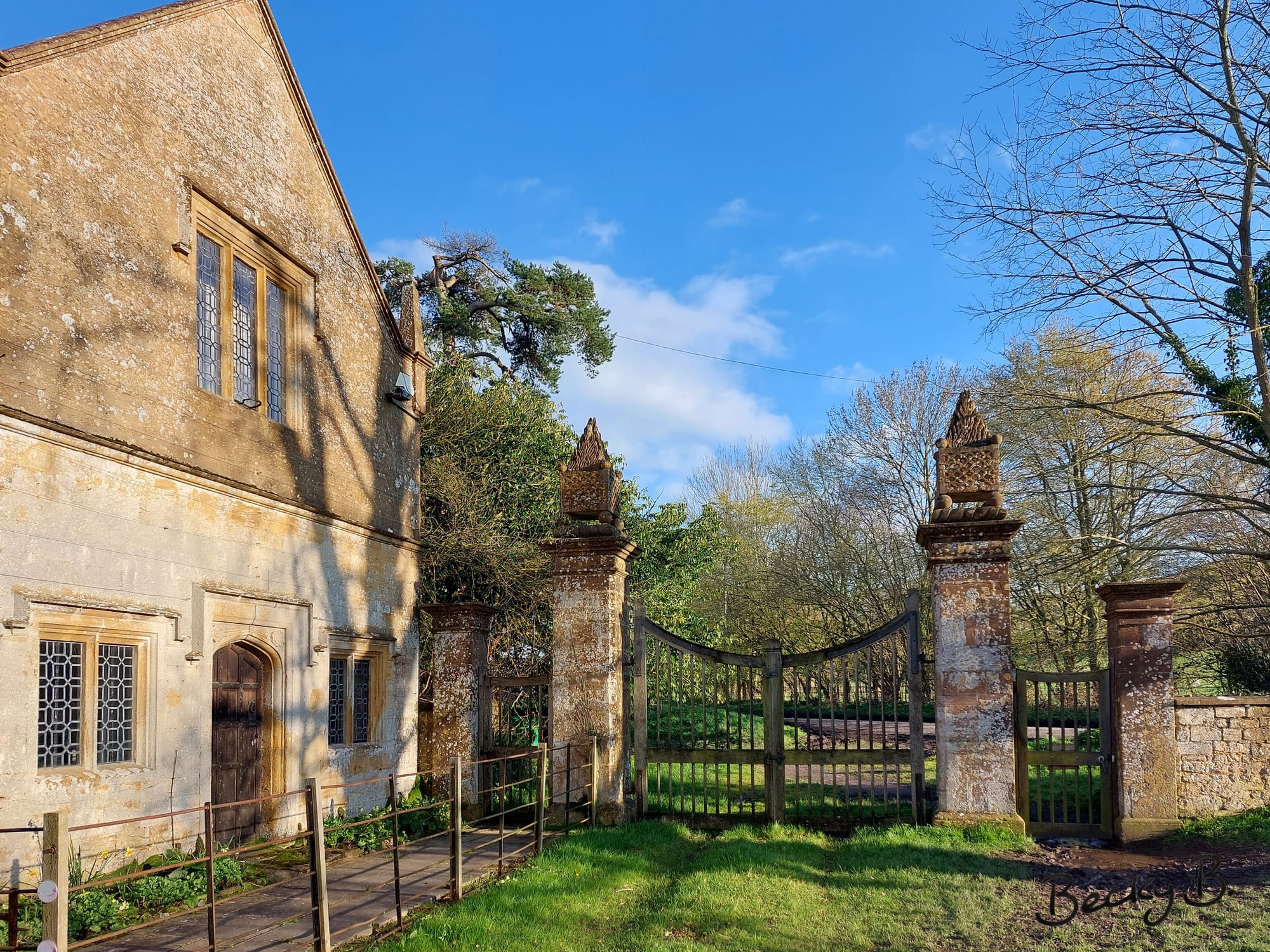
Montacute House is an Elizabethan 3 storey hamstone mansion, completed by Sir Edward Phelips (c.1555-1614) and built by Stonemason William Arnold, probably following plans by John Thorpe. The building was probably started around 1598 (based on dates on a fireplace and in stained glass in the house). The date 1601 is engraved above a doorway, so this is considered to be the date of completion. The original frontage of Montacute House faced east; upper floor windows are flanked by statues of the Nine Worthies (below, image copyright Rebecca Bosson 05.02.2023)
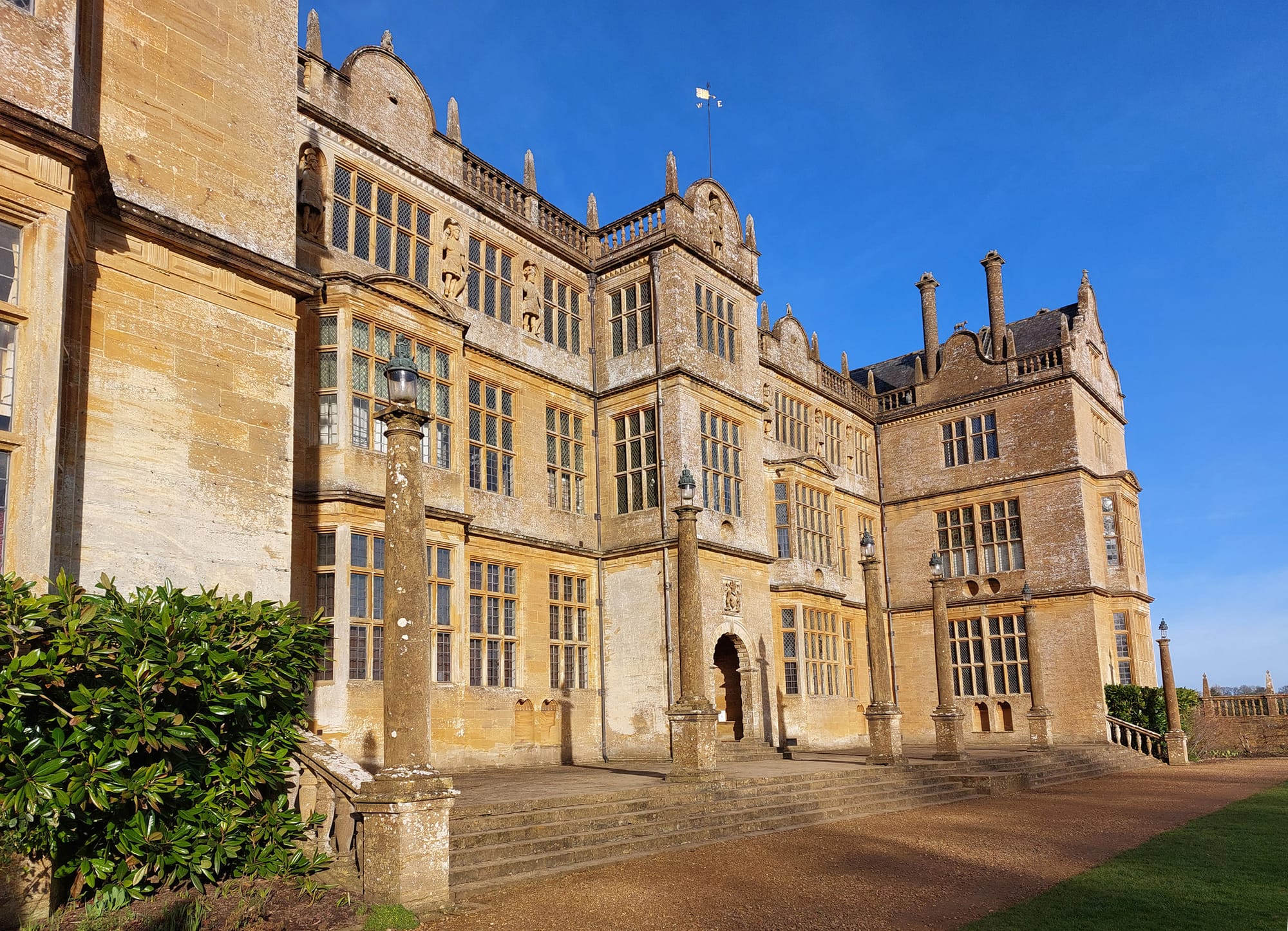
Some of the stone came from Montacute Priory, which had been leased to Sir William Petre in 1539 after Henry VIII's dissolution of the Monasteries (1536-41); the priory church was demolished several years before construction of the house.
1567 portrait of Sir William Petre, Secretary of State to Henry VIII, Edward VI and Mary I. (National Portrait Gallery, Public domain, via Wikimedia Commons accessed Feb 2023)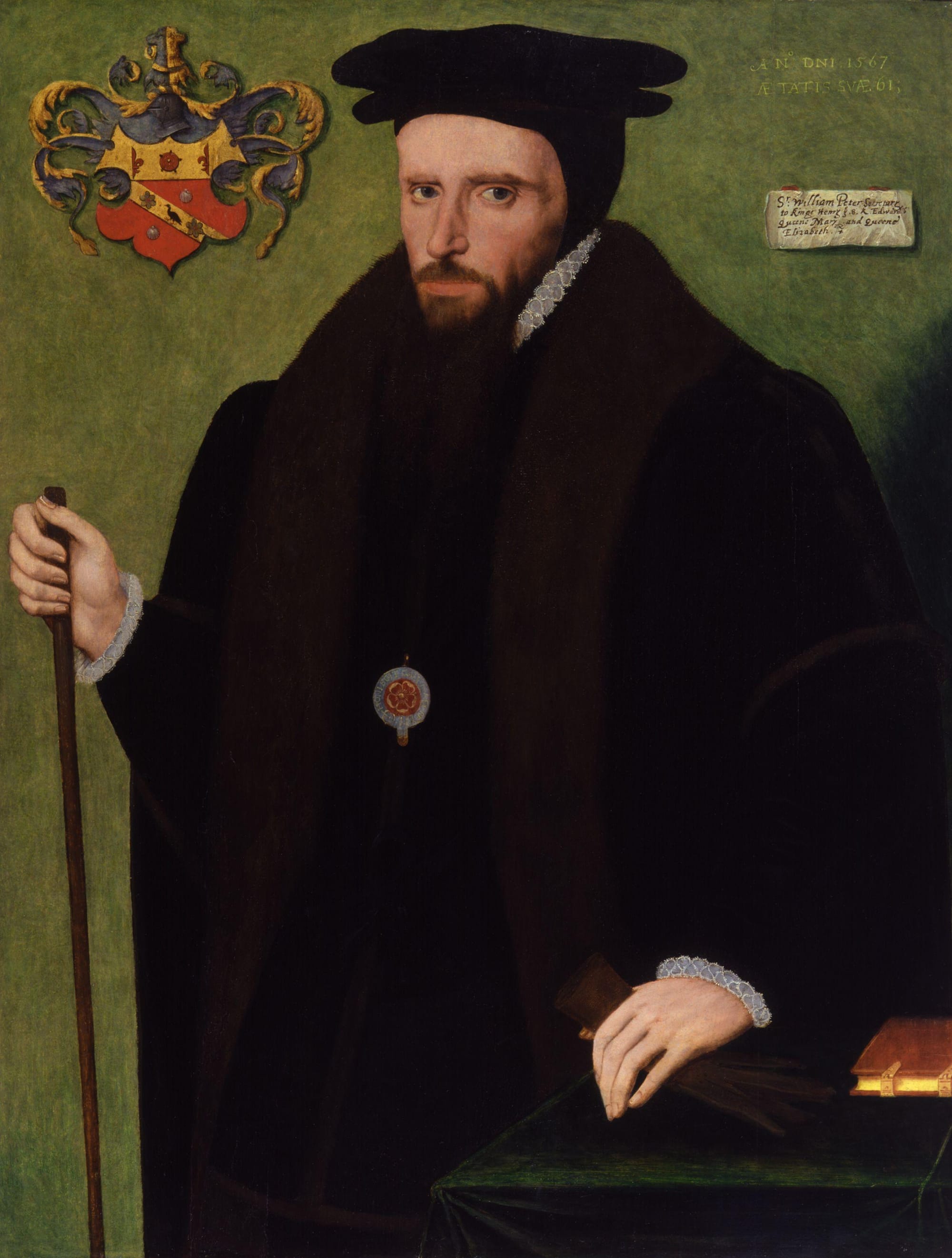
Victoria County History tells us that after the dissolution of the monasteries the Crown leased the property of the priory to Sir William Petre: "The grant included the site of the monastery, the borough of Montacute, and the manors of MONTACUTE, MONTACUTE BOROUGH, and MONTACUTE 'FORREN', later known as MONTACUTE FORUM. These divisions of the original estates were probably no more than simple administrative units, and do not seem to have been manors in the strict sense of the term. In 1542 Sir Thomas Wyatt (d. 1542) of Allington (Kent) acquired the reversion of Petre's lease, and granted copyholds there. He bequeathed his interest to Elizabeth Darrell of Littlecote (Wilts.), with remainder, failing heirs, to his own son Thomas. After the attainder of the younger Thomas in 1554 (for leading Wyatt's rebellion against Mary I) the reversion fell to the Crown and was given to Sir William Petre. Petre continued in possession until his death in 1572. It is possible that his son John succeeded to the lease, which still had over twenty years to run, for he was certainly granting sub-leases of parts of the estate by 1580, and so continued until 1590. Meanwhile in 1574 Robert Dudley, earl of Leicester, acquired the reversion of the manor in fee, and at once sold it to Robert Freke of Iwerne Courtnay (Dors.). Freke succeeded to the manor in fee before his death in 1592, and his son Thomas was still lord of the manor in 1607. By the end of the following year he had been succeeded by Sir Edward Phelips."
[A man named Thomas Freke was vicar of Montacute from 1520 through the Reformation period, and was still vicar in 1554.]
Montacute House was occupied by the Phelips family from when it was built until 1911, when their poor financial situation forced them to let it out. Lord Curzon, Viceroy of India, lived there from 1915 until 1921; he was unpopular in the village (ref?). Despite their attempts Montacute House did not sell until the late 1920's when it was bought for scrap value. It was due to be demolished for its stone but was rescued by Ernest Cook, grandson of Thomas Cook of Travel fame. He donated it to the burgeoning National Trust through the Society for the Protection of Ancient Buildings who then passed it on; it was formally acquired by the National Trust on 27th November 1931. According to Jonny Yarker in his essay "Continuity and the Country House: Preservation as a Strategy of Display from 1688 to 1950", Montacute House was the National Trust's first experiment in opening a country house to the public. When the National Trust took it on all contents had already been disposed of; the current contents are donations of pre-1700 furniture. The only items of furniture that actually came from the house in the first place are 6 chairs in the library:
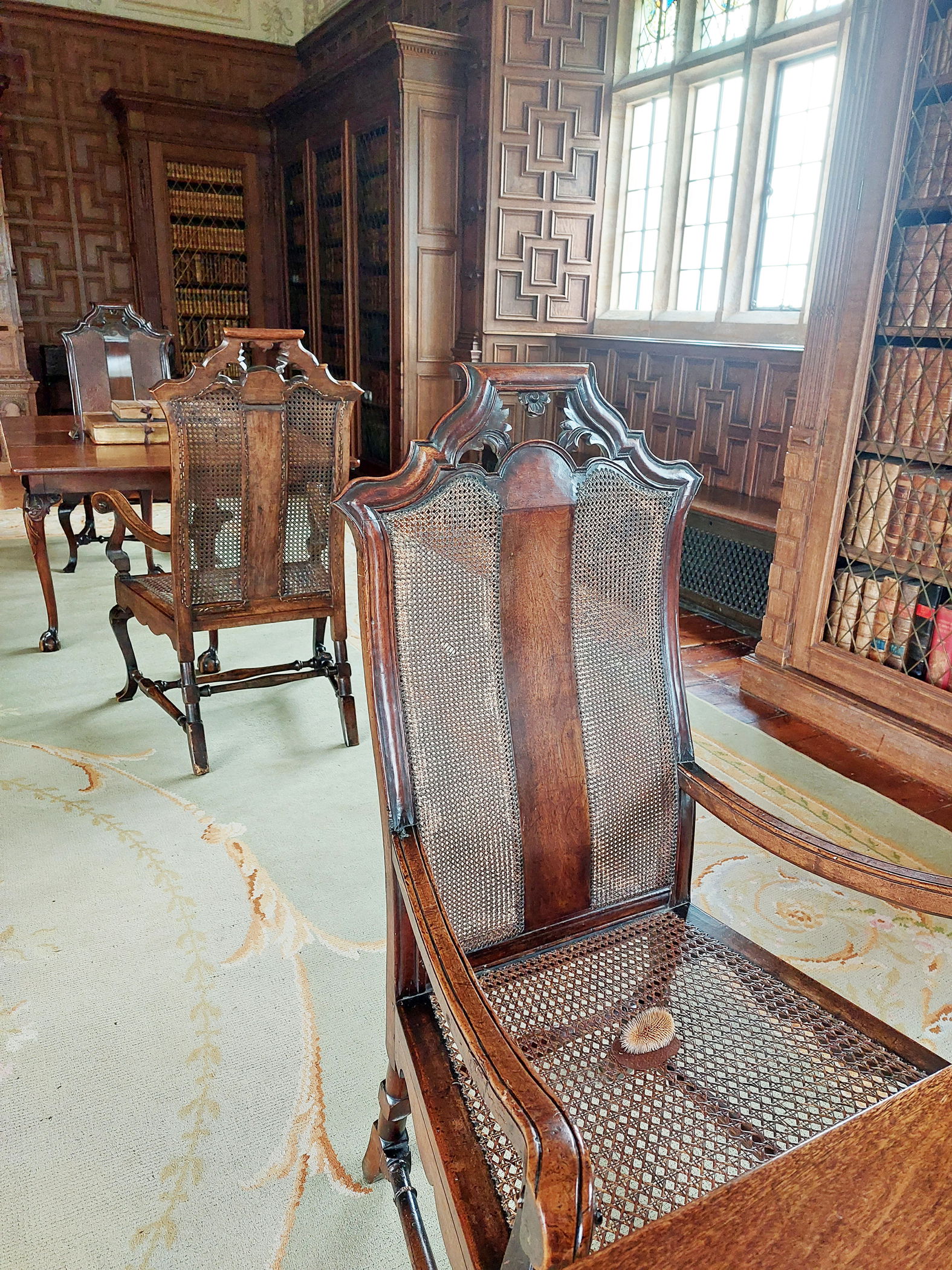
Viewed from the original east-facing front door, the tree-lined drive beyond the 2 ogee-roofed pavilions can still be seen leading across the park to Montacute Lodge (image copyright Rebecca Bosson 05.02.2023):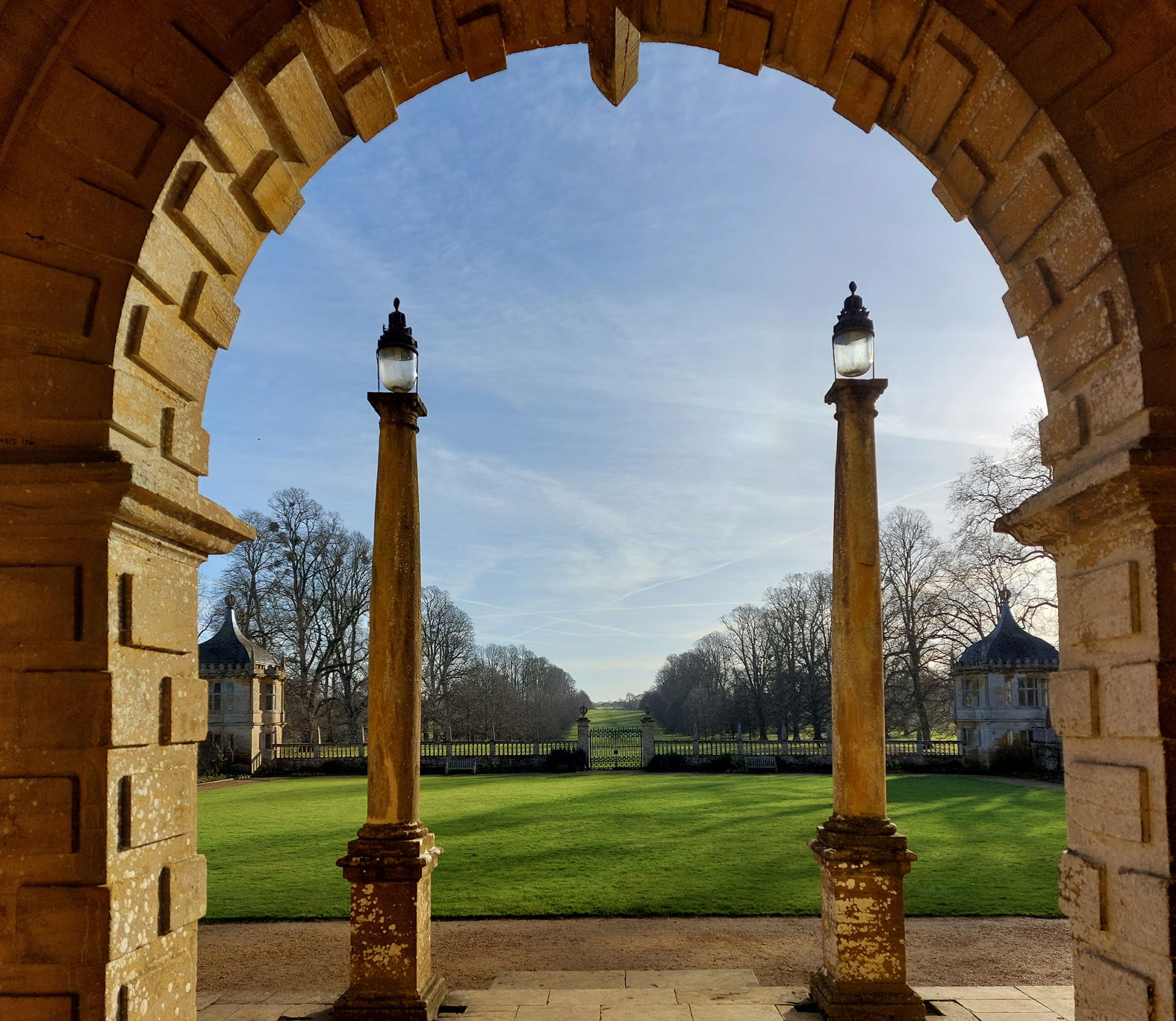
Apparently evening visitors approaching the house along the original east drive saw its windows ablaze with light, backlit by the setting sun. Since the addition of the West Porch in 1786 it is no longer possible to see the sunset through the lower windows but the effect can still be seen in the upper windows:

The engraving pictured below by Thomas Bonner (from a survey by Mr Edmund Rack and published by Collinson in 1791) shows the approach to the house from this same easterly direction along the drive; the shape of St Michael's hill portrayed in the picture is surprisingly dissimilar to its present-day shape:

The ARCHI UK archaeological sites website previously included a Victorian Ordnance Survey 1 inch to 1 mile map apparently dating from 1805-1869 showing the ancient Ilchester to Ham Hill road crossing Montacute Park to the east of Montacute House, in front of the main east entrance:

This is the route of the earlier Ilchester-Ham Hill road on an 1886 map, highlighted red:

In 1786, almost 200 years after the house was built, the fifth Edward Phelips created a a new west entrance for the house; this may have reflected the change in local road use with adoption of the current main road through the village by the Ilminster Turnpike Trust in 1781. An ornamental porch was bought from the dismantling of the nearby Clifton Maybank House and used to create the new West frontage; the hamstone facade catches the evening sun beautifully. This created an internal corridor so people didn't have to pass through one room to access the next. A new entrance drive was created that met the turnpike road to the north west of the house, but this was north of the present-day West Drive, which was created later and involved re-routing the roads through the village.
The 1840 tithe map below shows the old west drive joining the turnpike road west of the house. There seems to be a turning circle laid out in front of the West Porch. The current West Drive was created in 1851-52, altering the course of the main road through the village and changing the route to Tintinhull. This created the cul-de-sac 'Smiths Row', leaving the 'Monks House' (named 'The Gables' on the map above) on the east of the main road instead of being to the west of the main road. In the picture below red dots mark the present-day road, yellow dots mark the new West Drive, and purple dots mark 'Back Lane', created when the Yeovil road was developed. The Cedars of Lebanon lining the West Drive continue through the recreation fields, as if they aimed to meet the top of Mason Lane. I wonder if the intention had been to extend the west drive for this full length and divert traffic to Tintinhull through Mason Lane instead of through Station Road?

Points of note inside the house are the plaster frieze of a skimmington ride, the tapestries, and the long gallery which until recently held paintings from the National Portrait Collection; pictures from the National Portrait Gallery are still on display in other rooms at Montacute House and relate strongly to the history of the Phelips family. Before its association with the National Portrait Gallery, in 1961 five portraits were stolen from the House; Portrait of a Man and Portrait of a Lady by Sir Joshua Reynolds, Portrait of Mrs Hill by Gainsborough, Portrait of Sir George Ramsey of Bamff by Raeburn, and Portrait of a Lady by Hudson. Also 2 fire-screens were taken at the same time. (The Burlington Magazine, vol. 103, no. 699, 1961, pp. 287–89). The items were finally recovered in 1971.

The Phelips family: (ref Montacute House' by Malcolm Rogers, also https://www.historyofparliamentonline.org/)

The family tree pictured above is on display in Montacute House. Note that although Phelips is the spelling used here, when you look at old documents many alternative spellings are used, eg Phelipp, Phelipps, Phillips, often with multiple spellings clearly referrring to the same person. I have used the spelling 'Phelips' throughout. The following history uses information from Malcolm Rogers' excellent publication 'Montacute House', with additional sources. So the known Phelips lineage in Montacute started with:
William Phelips, married Margaret de Clapton; held a burgage of land in Montacute in the reign of Edward III, so 1377 or earlier. The next Phelips we know of is:
David Phelips, married Ann, monument dated 1484 in Montacute Church (see photo below).
Thomas Phelips -d. 1501. Married Jane, widow of "Abbot of Pendomer"; I think this means widow of Mr Abbott rather than widow of an Abbot. Recorded as living in Lufton in 1466, served as escheator for Somerset and Dorset in 1471 and 1478. As escheater he performed 'inquisitions post mortem" (IPMs) to ensure return of property to a lord or to the crown if someone died without heirs. Generally held by minor officials, the role could provide a good income through fees and also other payments and gifts. Ownership of land was a pre-requirement for the position. He was probably also a collector of customs in Bridgwater. He moved to Montacute between 1474 and 1480; in 1479 he bought half burgage in North Street "namely on the east side of that street between a burgage of Thomas Geffray and a garden of the said Thomas Phelips on the south" (ref Montacute House' by Malcolm Rogers). Thomas Phelips died early in 1501 after making a will providing only for a wife and witnessed by a Richard Phelips (his son?); he left instruction that he should be buried in the priory (not the church). The will may still be in the library of Canterbury Cathedral. His property was left to his wife Jane, who also acquired the lease for the manor of 'Brooke Montacute', north of the village (ref Montacute House' by Malcolm Rogers). He was succeeded by 2 sons; Thomas 1483/84-1565 (of Sock Dennis?) and Richard, c.1480 to after 1558 .
In St Catherine's Church there are monuments for possible contemporaries of Thomas Phelips; one for 'David Phelips Esqr and Ann, his wife, 1484', possibly the parents of Thomas Phelips d. 1501, and one for 'Bridget Phelips, 1508'. In Victoria County History it says: "The north transept contains monuments to the Phelips family, including four recumbent effigies. The earliest is claimed to represent David Phelips (d. 1484). Two are unidentified and the fourth, which is surmounted by a canopy, has effigies of Thomas Phelips (d. 1590) and his wife. A classical wall monument commemorates Sir Edward Phelips (d. 1699) and his wife (d. 1728)."
At the moment I'm confused by this statement as currently there are no unidentified effigies; there are 2 recumbent figures on the canopied monument titled Thoms Phelips Esqr 1588 and Eliza Phelips, 1598 respectively. On a second monument are "David Phelips Esqr and his wife Ann 1484", then there is the singleton monument for "Bridget Phelips 1508". This makes 3 monuments and 5 recumbent effigies. Is there another figure I missed? Further, I don't know how the David, Anne and Bridget relate to the other Phelips'?
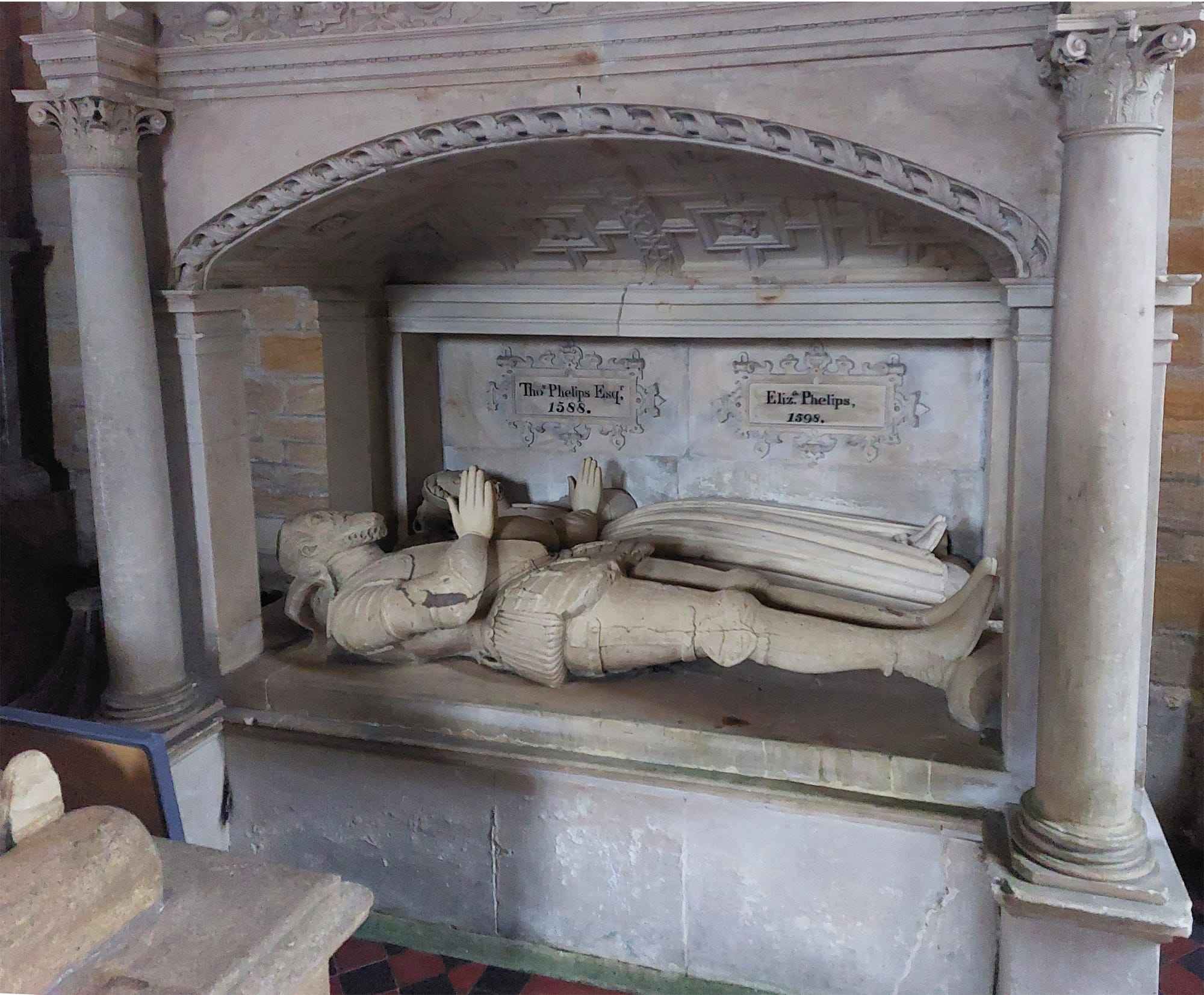



Richard Phelips (c. 1480? -by 1488 to 1558), History of Parliament online says "son of Thomas Phelips by Joan". Married Emeline. 4 sons and 2 daughters including Thomas, Bertram (died young?), Henry, William, Elizabeth and Edith. Richard lived through the reigns of Tudors Henry VII (1485 – 1509), Henry VIII (1509-47), Edward VI (1547 – 1553), Lady Jane Grey and Mary I (1553 – 1558). Yeoman of the chamber by 1509, he was in the household of Henry VII and present at the coronation of Henry VIII. Butler, Lyme Regis and Weymouth 1510-13; collector of customs, port of Poole 1511-14, 1520-7; escheator, Somerset and Dorset 1520-1; commr. subsidy, Dorset 1523, 1524, 1533, benevolence 1544/45, relief 1550; JP Dorset 1523-d., Som. 1536-47; under sheriff, Dorset 1531-2. Listed as "of Poole and Charborough, Dorset, Southwark, Surr. and London" in history of parliament online for 1509-1558. Elsewhere listed as "of Barrington, Montacute and Charborough". From 1523 he was recorded as living at Sock Dennis in Tintinhull, just north of Montacute; he moved to Charborough in 1531 and bought the nearby manors of Corfe Mullen and Corfe Hubart while his eldest son, Thomas, remained at Sock Dennis.
About 1525 part of Sock Dennis manor was leased from Thomas Grey, 1st Marquess of Dorset (d.1501) and Richard Phelips was surveyor-general of estates for his wife Cecily Bonville (one of the richest women in the country) and her son, Henry Grey, father of Lady Jane Grey. Henry Grey was a prominent supporter of Wyatt's Rebellion of 1554 and both Henry Grey and Thomas Wyatt were executed for treason and their lands were forfeited, including Wyatt's lease of the former lands of Montacute Priory which reverted to Sir William Petre. Of Richard Phelips, we are told "In 1527 his [Richard Phelips'] cousin John Witcombe of Somerset named him executor, provided he discharged himself from the troubles which he then had ‘against the King’. This Phelips succeeded in doing by way of a pardon in the next year, a deliverance to which he referred when writing to Cromwell in 1529 to thank him for the care he had taken and to ask him to intercede with Wolsey. Phelips had occasion to thank Cromwell again in 1533 and 1534 for helping his son Thomas, accused of breaking into the gaol at Ilchester, and to his gratitude he then added an offer of £20 if Cromwell would take Thomas into his service" [He did not!].
Richard Phelips' sole executor was his son Thomas; his son Henry stole from his parents and fled to the continent where his infamy included betrayal of William Tyndale, author of the English language Tyndale Bible. His daughter, Edith, married well; her first husband, John Stocker, was one of the richest merchants in Poole and her second husband, Sir John Horsey, was the builder of Clifton Maybank; the porch of Clifton Maybank was added to Montacute House's westerly frontage in 1787 and it has their initials, J and EH, carved into a panel.
Portraits of the later Phelips family members are on display in Montacute House

Thomas Phelips, 1514-1588/90, of Sock Dennis by Montacute, Som, married Elizabeth Smyth of Long Ashton. (For Thomas Phelips' portrait see National Trust link). 1st son of Richard and grandson of Thomas, in 1539 he held 10 burgages from the Priory and he was largest tenant of the Montacute monastic estates by 1566. 4 sons; John, Thomas (father of Sir Thomas Phelips of Barrington), Richard and Edward (of Montacute; see below). Thomas Phelips called himself 'a mere grazier' so the Phelips family may have made their money as wool merchants, farming sheep and exporting wool to France, then bringing back wine; a highly profitable enterprise, particularly in the 14th and 15th centuries. (Was he the Thomas Phylyps constituted builder and supervisor of buildings in Calais (31 Henry VIII)?) He was a member of the household of Catherine Parr on her marriage in 1543 to Henry VIII, and the lineage displayed in Montacute House (see above) describes him as "code expert' at court"; I have no idea what this means! On occasions from 1545 to 1558 he was MP for Wareham, Melcombe Regis and Poole. His house is thought to have been near the present-day stable-block of Montacute House and was demolished in the late 17th century. His oldest son inherited elsewhere and his youngest son, Edward, inherited his Montacute home; it is thought by some that it was Thomas who first planned to build Montacute House (where did I see this?) although it is more likely it could have been planned by his son prior to Thomas' death. There is a fantastic canopied monument to Thomas Phelips and his wife Elizabeth in Montacute's St. Catherine's church (see photo above). History of Parliament Online says that although Thomas made his will on 25 Sept. 1588 (in which he asked to be buried without pomp), his date of death was not until 28 May 1590, so presumably the inscription on the monument giving a date of death as 1588 was done much later when the exact year of death was not remembered locally?
Below - Thomas Phelips' biography from National Trust notes viewed at Montacute House in 2023 (confusingly records his wife's name as Jane Smyth from Long Ashton!):

Sir Edward Phelips I, 1554-1614, son of Thomas Phelips and Elizabeth, builder of Montacute House. Knighted in 1603. Birthdate given as c.1560 in the 1558-1603 list of and as 1554 in the 1604-1629 list of members biographies in 'history of parliament online'; "of Chancery Lane, London and Montacute, Som" then "of Boswell House, Drury Lane, Mdx.; Montacute, Som.; and Wanstead, Essex"; died 1614. So Montacute House seems to have been an occasional residence! He lived through the reigns of the last Tudor (Elizabeth I 1558-1603) and the first Stuart (James I and VI of Scotland 1603 -1625), being quite involved in the court of James I. The youngest of the 4 sons of Thomas Phelips, grandson of Richard and great-grandson of Thomas, he inherited his father's Montacute property jointly with his wife first wife Margaret Newdigate in 1587. A lawyer, his offices included J.P. Som. from c.1591, Bencher and Autumn reader, M. Temple 1596; King’s serjeant 1603; Justice of common pleas, Lancs. 1604; custos rot. from c.1608, Speaker of House of Commons 1604-11, Master of the Rolls 1611; Ranger of Royal Forests 1613. Although a friend of Sir Walter Raleigh, he stood for the government in his trial. Built Montacute House by 1601 but did not become Lord of Montacute until 1608 when he bought the former monastic property.
Below; a late 18th century portrait of Sir Edward Phelips displayed in Montacute House:

The image below from the National Portrait Gallery (NPG D23258) depicts Edward Phelips as speaker in the House of Commons; the picture is "attributed to Thomas Athow, after Unknown artist. Watercolour, early 19th century. Creative Commons license. This is slightly confusing as the picture is captioned 'Speaker 1603' but the records I've found suggest he was Knighted in 1603 and Speaker from 1604 to 1610; in 1606 he was opening prosecutor for the trial of the perpetrators of the 1605 Gunpowder Plot.
The Phelips family members listed below are limited to those who owned Montacute House:
Sir Robert Phelips, 1586-1638 of Montacute, Som. and Drury Lane, London. Married Bridget Gorges. Children Edward and Robert (both became Colonels in the Royalist army). Knighted 1603. MP for Somerset, High Sheriff 1624. One of the leading parliamentarians of his age and a skilled orator, he was prepared to face confrontation over a key point of principle, regardless of the consequences. In 1622 he was imprisoned in the Tower for 7 months and then confined to house arrest at Montacute for several more months for going against James I in the Commons. Finding himself in financial difficulties he turned courtier in his later years but couldn't repay his debts, so in 1632 he settled most of his estates on his eldest son Edward to ensure Edward's marriage to Ann, daughter of the wealthy Sir Robert Pye.
Below; portrait of Sir Robert Phelips displayed in Montacute House attributed to Hendrik Gerritsz Pot (c. 1580-1657)

Col. Edward Phelips II, 1613-1679. Married Ann Pye. Children Edward, John and William. Colonel of horse (Royalist) in the Civil War c.1643-5; gov. Ilchester c.1643-5. MP Ilchester 1640-44, Somerset 1661. JP Somerset 1638-46, July 1660-d., commisioner of array 1642, oyer and terminer (western circuit) July 1660; deputy lieutenant Somerset July 1660-d., high steward, Ilchester 1661-d.; intermittently commisioner for sewers, corporations, loyal and indigent officers and recusants between 1660-75.
The Roundhead government charged him fines of sequestration (i.e. they took 4/5 of his estate) putting him into such debt that he had to sell furniture from the house. Then in 1655 Robert, Edward's brother, was suspected of involvement in Penruddick's Rebellion and Edward was committed to Ilchester Jail and given another large fine. This meant he was unable to fulfill the bequests of his father's will, and many family quarrels and lawsuits followed.
Below: 1663 portrait of Col Edward Phelips by Jacob Huysmans displayed in Montacute House:

Sir Edward Phelips III, 1638-1699, married Edith Blake (1662-1728). 3 daughters; Ann, Elizabeth and Edith. Buried at Montacute. Knighted by Charles II in 1666. MP Ilchester 1661 and 1668. Unpopular for his aggression towards Catholic recussants and religious dissenters; assisted in searches and burning of houses in Bridgewater after the 1683 Rye House plot to assassinate Charles II.
Reliant on Sir Edward Phelips for their livelihood, none of the Montacute villagers joined Monmouth's 1685 rebellion or were tried at Judge Jeffry's assizes. Colonel Sir Edward Phelips and Colonel Francis Lutterell led their Somerset regiments to join forces with the Duke of Albermales's Dorset regiment at Axminster in June 1685 and to intercept the Duke of Monmouth; reports say when the enemy approached "some of both regiments" ran away. Later, although failing to arrive in time for the Battle of Sedgemoor, Phelips' militia were praised by the King's officer, Lord Feversham, for arriving 'in good order' and with 'great haste'. However these reports may not do justice to Phelips' men, who were harshly drilled, thought their Dorset allies had turned against them at Axmister, and were camped 2 miles away from the site of the Battle of Sedgemoor when Monmouth's rebels attempted a midnight attack on the King's forces.
When Sir Edward Phelips passed away in 1699 his wife, Lady Edith Phelips, was appointed executor and managed the property until her death in 1728. It was unclear from the will of Sir Edward PhelipsIII whether the estate then passed to the eldest of his 3 girls (Ann), or to all three equally.
Below: 1685 portrait of Sir Edward Phelips III displayed in Montacute House:

This notice in St Catherine's church describes the inscription on his memorial:
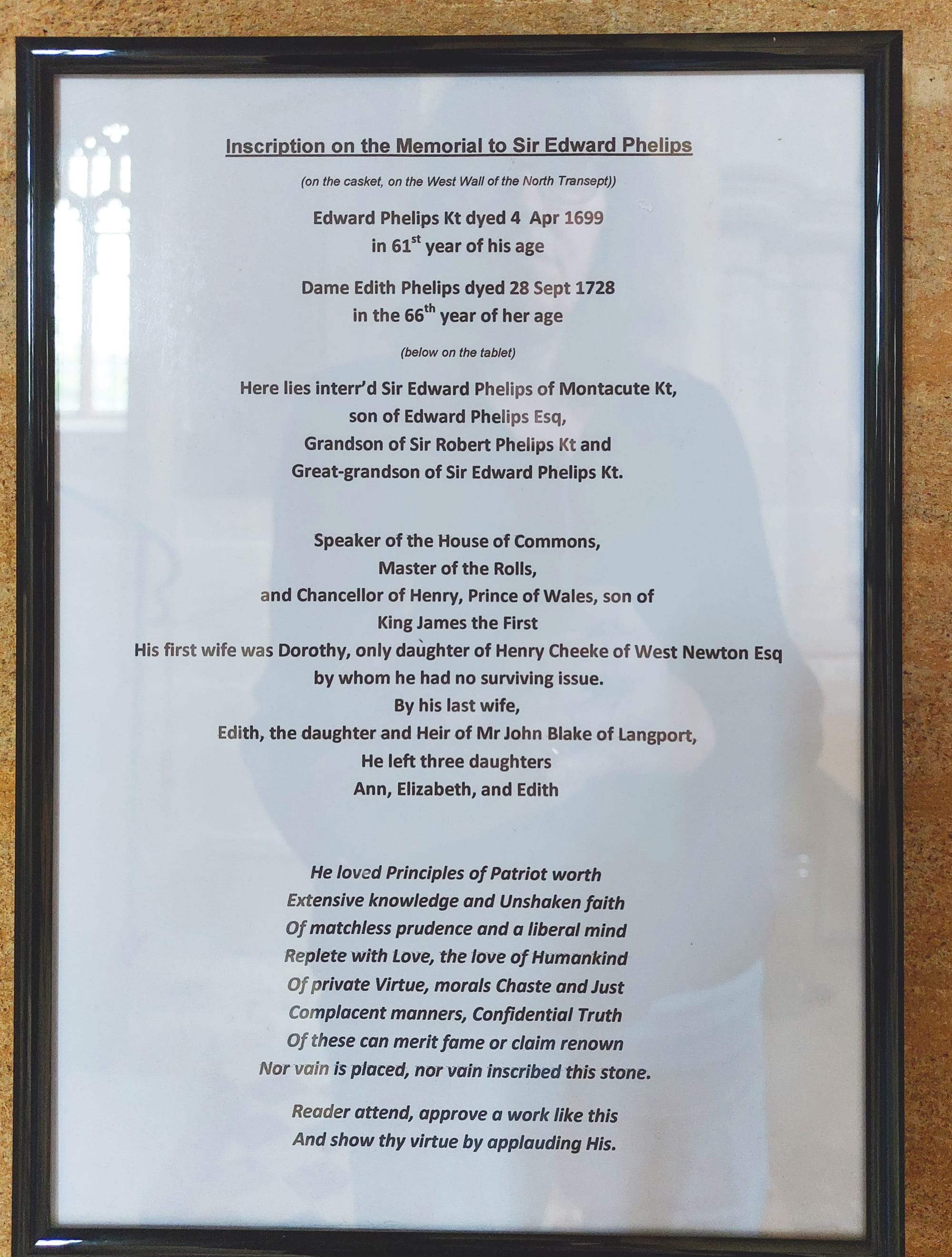
Edward Phelips IV, 1677/8-1734, son of Capt. John Phelips of Kilpatrick, Ireland. Succeeded his uncle, Sir Edward Phelips, to Montacute in 1699, and to his father's properties in England 1701. He married his cousin Ann, daughter of Sir Edward Phelips III, then when she died he married Ann's younger sister Elizabeth, recombining their two thirds of the Montacute estate. Had daughters Anne (m. John Horiver) and Bridget (m. Sir Gerard Napier) by his first wife, and son Edward by his second wife, Elizabeth. Buried at Montacute 13th May, 1734.
Below: portrait of Edward Phelips 1677/8-1734 displayed in Montacute House:
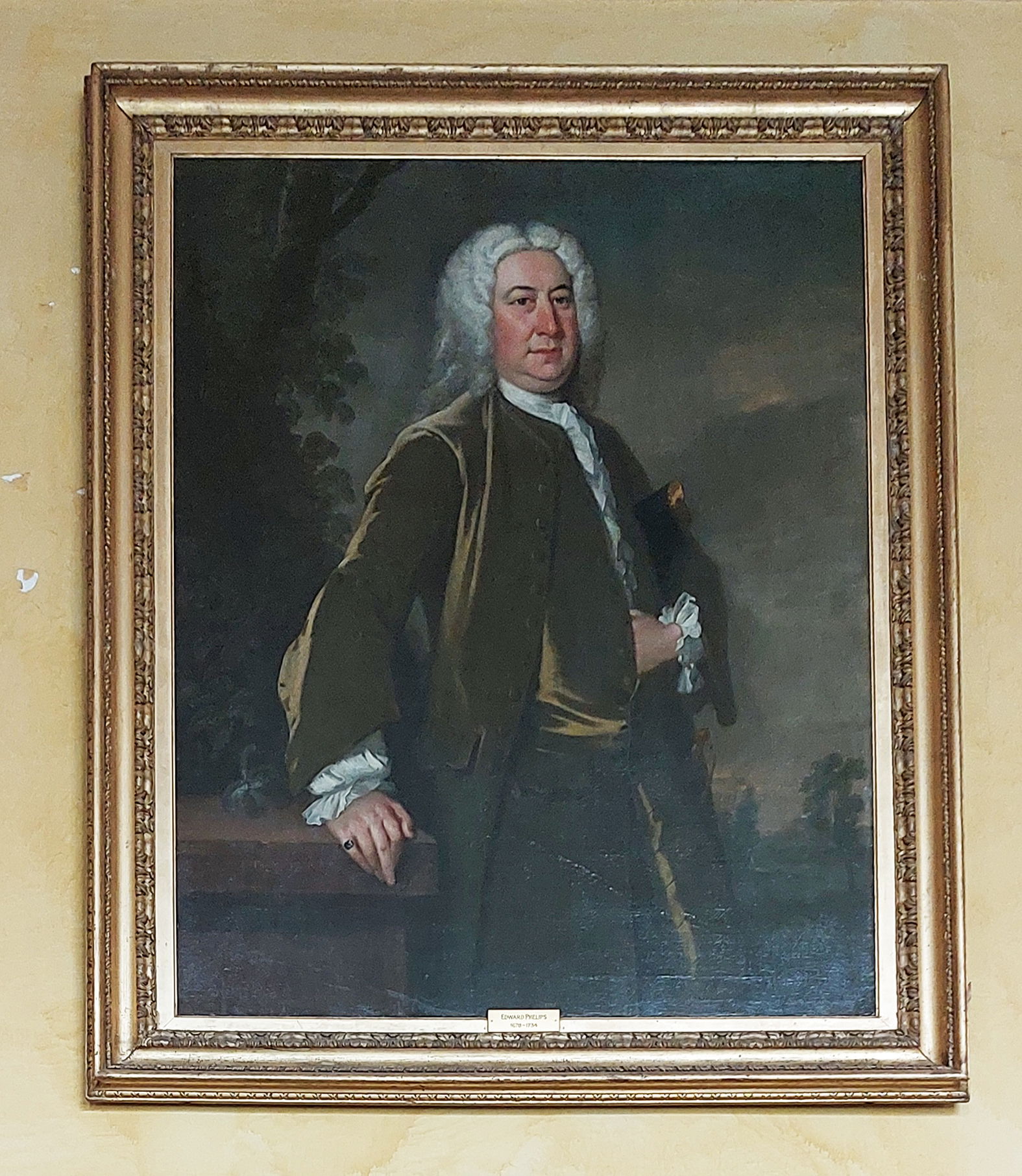
Elizabeth Phelips, 1689-1750, daughter and heir of Edward Phelips III and widow of Edward Phelips IV. When Edward Phelips IV died his son was just 9 years old so his widow Elizabeth ran the estate on her son's behalf until he came of age. She negotiated with her younger sister, Edith Mildmay, and her 2 neices (Anne Horner and Bridget Napier, daughters of her sister Anne from her husband's first marriage) so that Montacute House would be inherited by Edward Phelips V.
St Catherine's Church has the following memorial to Edward Phelips 1677/8-1734 and his wife Elizabeth Phelips 1689-1750:

Edward Phelips V, 1725-1797. Married, Maria, daughter of William Wright in 1747; 4 sons and 3 daughters. (Elizabeth born in 1750, Edward in 1753, William in 1755, John in 1756, Maria in 1757, Rhoda in 1759, Charles in 1765). He built the Tower on St Michael's Hill in 1760, and in 1787 added the Clifton Maybank frontage to the west entrance to provide a corridor to access rooms. His autobiography is held in the Somerset Records Office. He received considerable inheritances from his aunt, Edith Mildmay, and his nephew, Richard Napier. Succeeded by his second son William; Edward, the eldest son, died before his father; a poem he scratched on a pane in the library is still in situ:
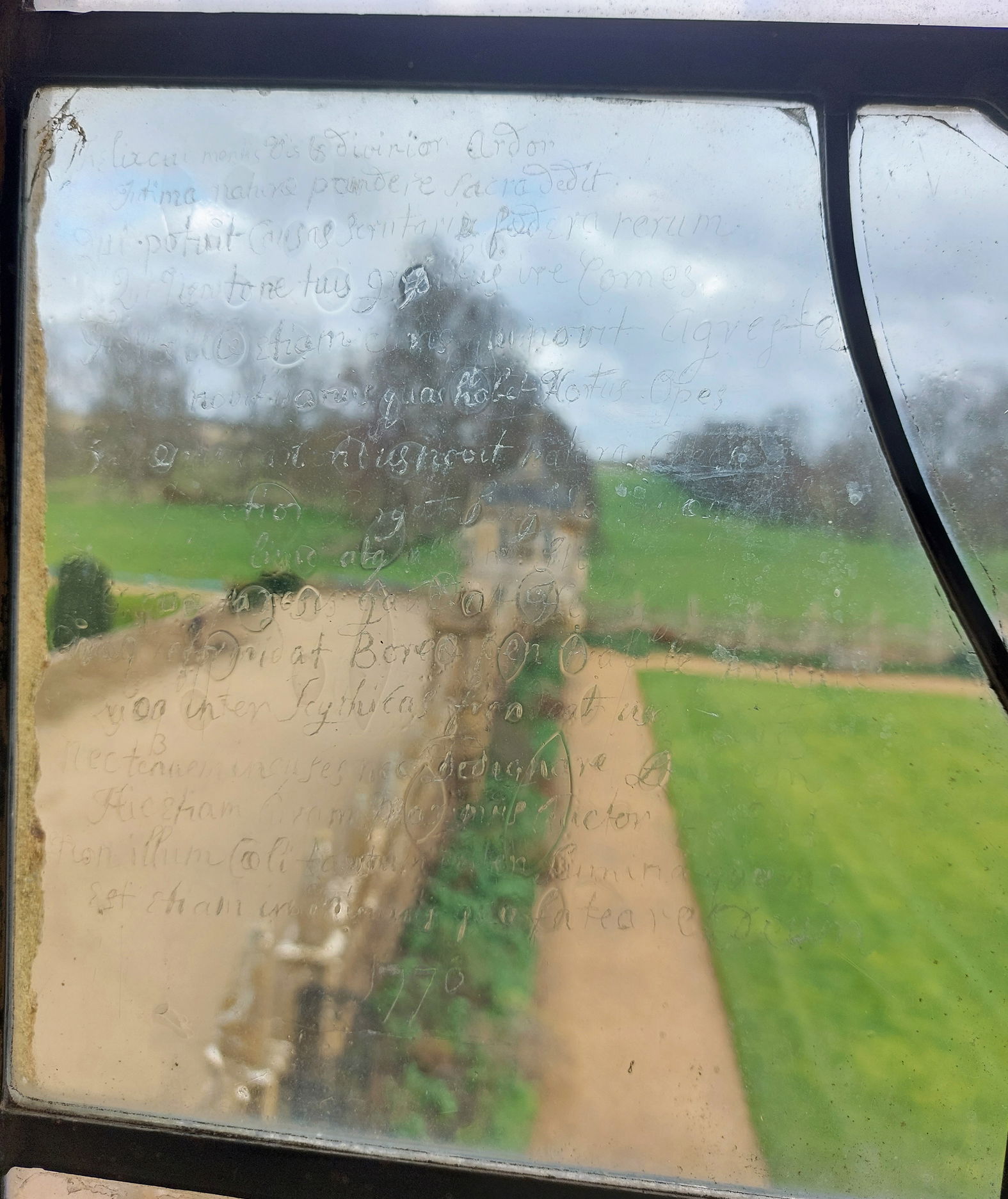
Below: portraits of Edward Phelips 1725-1797 displayed in Montacute House. Left; 1769, unknown artist. Right; contemporary painting by Francis Cotes:

Below: The National Trust holds this lovely portrait of a young lady in the style of Diana the Huntress. Their information says it was painted in about 1750 by Thomas Beach and it is a painting of Elizabeth Phelips, eldest daughter of Edward Phelips V. However this Elizabeth Phelips was born in 1750 so the dates seem muddled.

William Phelips 1755-1806; Vicar of Yeovil. Portrait around 1780/5 by Thomas Beach (public domain, via Wikimedia Commons).
John Phelips 1784-1834; Click link to see portrait painted around 1820/5. Eldest son of the Rev. William Phelips and Anna Paget; married his cousin Mary Anne Phelips (1795-1869) daughter of Rev Charles Phelips and Mary Blackmore. He was noted for his kindly and charitable disposition. Memorial in St Catherine's Church.
William Phelips 1823-1889, son of Rev William Phelips (1789-1833) and Mary Messiter of Cucklington). Succeeded his uncle, John Phelips, to Montacute in 1834. Married Ellen Harriet Helyar in East Coker in 1845, children William Robert Phelips and Edith Phelips. William Phelips made many improvements and renovations to Montacute village and in the House where he turned the Great Chamber into a library. It is reported that he became insane; an addicted gambler, he was eventually incarcerated for his own good, but not before he had lost the family fortune and vast tracts of the Montacute Estate. However research by SR suggests this is a sensationalised account; disability may have become stigmatised with the eugenics movements of the early 20th century, and the land and fortune associated with Montacute House had been steadily decreasing for generations. In truth William probably suffered some sort of mental illness throughout his life, and although he clearly was able to cope well for much of the time, even to the extent of doing huge improvements around the village, at other times he had to be cared for and this was done by a sympathetic and caring family. I'm currently looking for the references to support this version of his life.
Below: portrait of William Phelips 1823-1889 displayed in Montacute House:
to follow
William Robert Phelips 1846–1919 took control of the estate from his father in 1875; agricultural rents from what remained of the mortgaged estate were low, and the house was a drain on limited resources. Selling the family silver and art works delayed the inevitable by a few years, but in 1911 the family were forced to let the house, for an annual sum of £650, and move out. The Phelipses never returned.
Below: c.1910 portrait of William Robert Phelips, the last Squire of Montacute House, (by Percy Warner James Buckman?) displayed in Montacute House:
